Red anthurium: popular varieties and home care
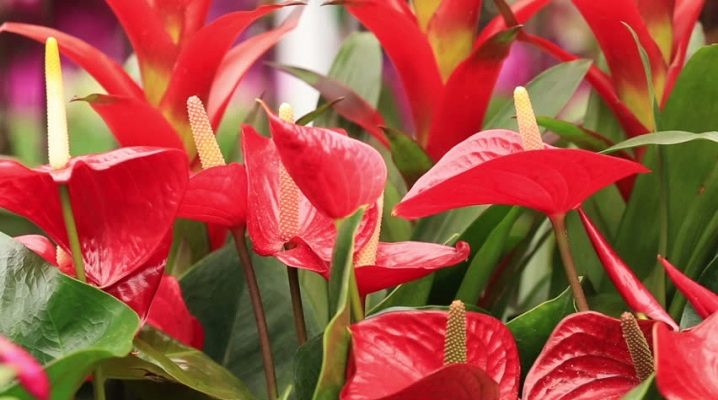
Red anthurium belongs to the aroid family and is an epiphyte. In its natural environment - the tropics of America - it grows on trees, clinging with long roots to trunks and branches. It also grows on rocky ledges and gorges.
Peculiarities
This beautiful flower is popularly called "male happiness" or "family happiness". It is believed that the house in which the plant is located will be full of prosperity and prosperity. It is a good gift for both men and women.
There is an opinion that this flower enhances the sensual energy of the male, and for young ladies it is a harbinger of a happy marriage, and brings harmony and understanding to the family.
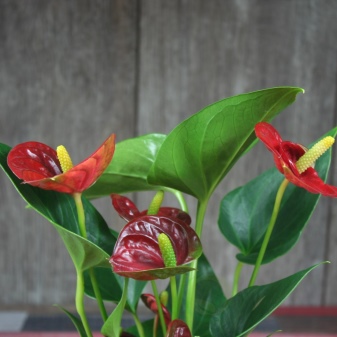
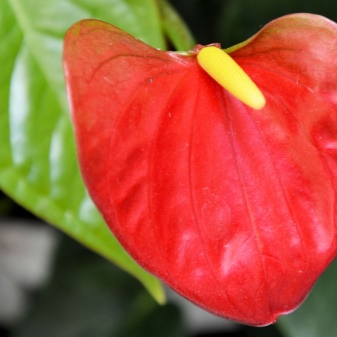
Anthurium leaves grow on tall, thin stems, have a slightly elongated heart-shaped shape. Their size is quite impressive. The surface of the leaf plates is glossy, with a deep dark green color. They have an extraordinary property to unfold after the sun.
The flower of the plant is an inflorescence-ear of white-yellow color, framed by a bright scarlet bracts in the form of a heart. Distinct veins are clearly visible on its shiny surface. Red anthurium blooms for almost a whole year, with the exception of a short pause in winter. If you create artificial pollination for a flower, you can see the fruits of the plant. These are something like round orange berries with two seeds inside.
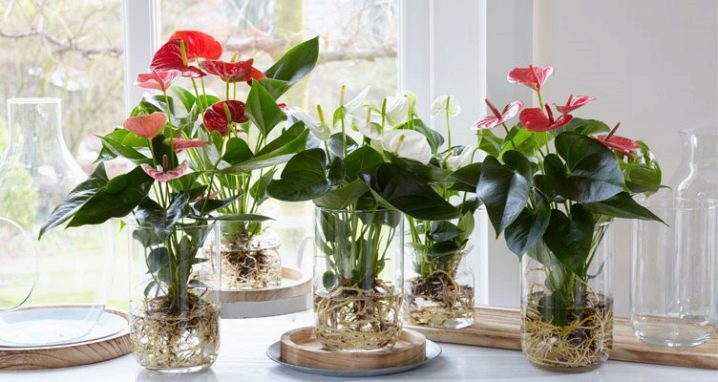
Crystals of calcium oxalate are located on the surface of the leaves - a poisonous substance that irritates the mucous membranes, the plant sap is also toxic. For adults, this does not pose a threat, but children or animals, having tried the plant, can earn an allergic reaction. In this regard, the indoor flower must be positioned so that it is out of their reach. Anthurium roots can also provoke allergies, so it is better to use gloves when in contact with them. The plant does not cause more serious health problems.
The plant has the ability to absorb exhaust fumes and heavy plastic odors, and also releases phytoncides, disinfecting the air space around. Ornamental red anthurium flowers are often cut to create flower arrangements. They can stand in water for up to six weeks without losing their elegance. In the East, such flowers are added to the bridal bouquet.
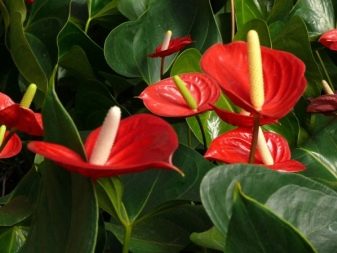
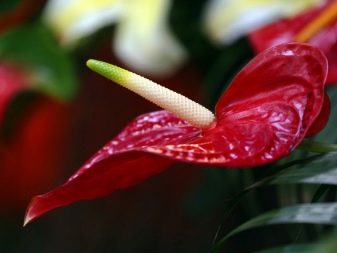
Views
This plant variety has its own varieties:
- Andre - has a bright red blanket, gently enveloping a gracefully curved ear;
- Schwartz - with large leaf plates and a spiral tip;
- Crystal - has large velvety leaves covered with graceful veins of a silvery hue;
- Majestic - small in stature with decorative, heart-shaped leaves, strewn with white veins;
- Climbing - blooming liana with oval leaf plates;
- Baker - differs in elongated leaves with veins of red-green color;
- Scherzer - has a curved stipule with a spiral cob;
- Dakota - the largest variety, can reach 80 cm;
- Dark Red - characterized by different color variations of the bedspread: from light pink to deep burgundy;
- Red Queen - has a stipule of dark red color and a greenish ear;
- Dynamite Red - owns a curved bright scarlet bracts with a yellow flower;
- Champion - with a rounded bedspread with slightly raised edges and a pink or yellow shank.
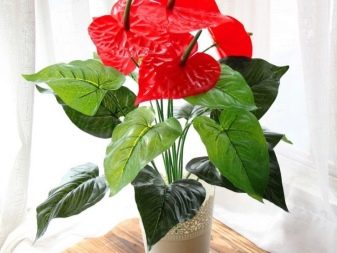
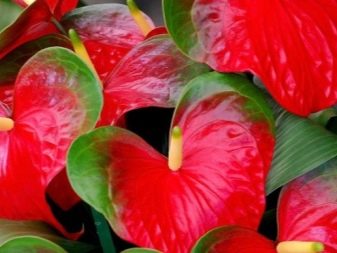
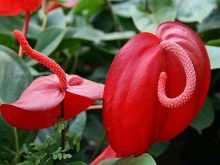


Conditions of detention
Red anthurium is not a particularly demanding plant. For a good condition, the plant needs diffused lighting, bright light will provoke drying of the foliage, and if there is a shortage, it will not bloom. In winter, artificial lighting is added if necessary. The flower does not like drafts, cold air and sudden changes in temperature. Otherwise, the anthurium will hurt.
Like all tropical plants, it needs high humidity. To maintain it, water is sprayed from a spray bottle around the flower, but care must be taken that the liquid does not fall on the flowers and leaf plates. At high temperatures, spraying is carried out more often. Comfortable air temperature for red anthurium is 20-25 degrees above zero in the warm season and + 15-16 in winter.
The plant does not tolerate a change in position in relation to light, especially in the phase of active growth, and reacts to this by falling foliage.

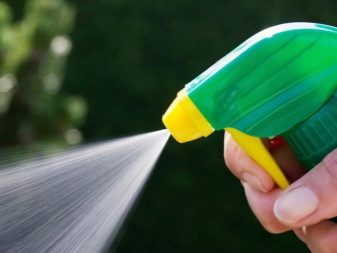
How to care?
So that the plant has a healthy and attractive appearance, as well as pleases with abundant flowering, he needs some kind of care.
- Lighting should be provided sufficiently bright, but without direct sunlight on the leaves. The optimal location is the eastern and western windowsills.
- To increase the humidity and maintain the required level, in addition to spraying the air, you can wrap the pot pan with wet expanded clay and moisten it every day.
- Moistening is carried out as needed, when the top layer of the substrate has time to dry out. The flower equally dislikes both drying out of the soil and excess moisture. In summer, watering should be done more often, about once every 2-3 days, and in winter, reduce the amount to once a week. They take the water settled and not cold.
- Fertilizing the plant is also necessary. To do this, use complex fertilizers diluted with water. They can be both mineral and organic.
- Anthurium sheet plates need to be washed with water or wiped with a damp cloth.
- To achieve normal flowering, in winter the plant is placed in a place that is well lit, with a lack of light it will turn yellow.
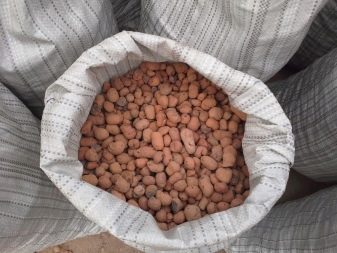
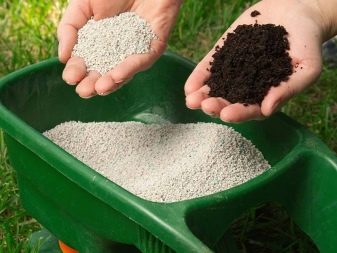
Transfer
When choosing a container for transplanting, you need to remember that a cramped pot activates flowering, and a more extensive one - dynamic growth. Drainage is a very important part of the red anthurium transplant process. It must be present without fail.
The substrate for transplanting a flower needs a fertile one that does not have high acidity. Several types of soil are optimal for this purpose:
- supplement the ready-made soil for begonias with coconut fiber and coal;
- combine peat with humus in equal proportions, add spruce or pine needles, broken brick and coal;
- Mix equal parts of sod land, river sand and humus with coal.
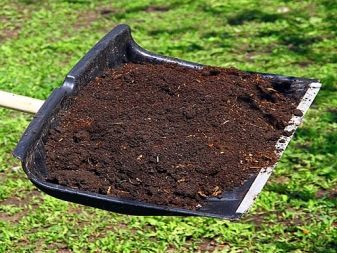

A flower transplant should be carried out approximately once a year, since the plant is actively growing. This procedure is carried out as follows:
- the selected container is filled with high-quality drainage by a quarter;
- the substrate is poured up to half of the pot;
- the plant, together with the earthen lump, is carefully removed from the previous container;
- rotted or damaged roots are removed;
- spread the flower in a pot, spreading the roots well;
- pour the soil on top and lightly crush it with your hands;
- it is necessary to ensure that the root collar is at the same level with the surface of the substrate, otherwise it will rot;
- the plant is moistened, covered with moss and covered with polyethylene;
- for several days the flower moves to partial shade;
- after normal rooting, the anthurium is put in its usual place, and the package is removed.

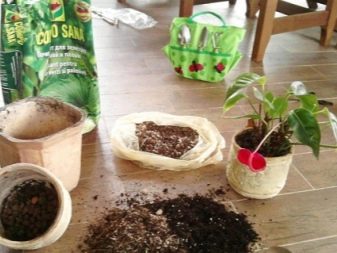
Reproduction
Red anthurium is being bred in several ways:
- cuttings;
- shoots;
- division;
- seeds.
The top of the stem is used as cuttings, dried for several minutes and dipped in a container of water or in a pot with prepared, well-moistened soil. The roots appear pretty quickly.
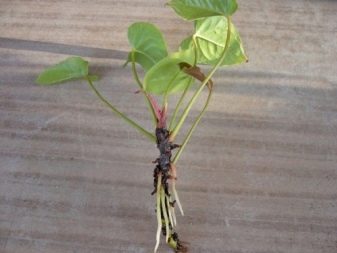

Mature plants form side shoots that are very suitable for transplanting. They are separated during transplantation; it is not worth digging up on purpose, since the root system is damaged. In case of urgent need, the entire earthen lump with roots and hands is pulled out of the container, the desired shoot is separated. The plant is planted in prepared soil.
Division is the most common breeding method for this species; it is carried out when a flower is transplanted. The mother plant is divided into several parts, but it is imperative that each has a growth point. This is done only with hands to avoid damage. Each part is planted in small containers, moistened and shaded from the sun. Top dressing begins a month after rooting.
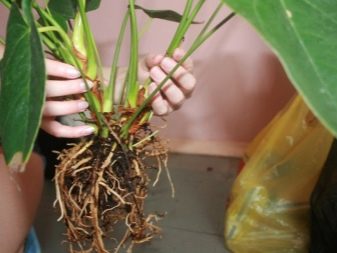

Seed propagation is the most difficult and not always successful way to reproduce this species, therefore it is used quite rarely. The seeds are sown in peat, the soil is carefully moistened and covered with a film. Seedlings sprout uncommonly, for two weeks. Then the shelter is removed, it is better to moisten the sprouts using a sprayer. Seedlings dive, when the third leaf appears, into small containers.
Some types of anthurium, among which are the well-known varieties of Andre and Scherzer, can be propagated in a somewhat unusual way. A piece of paper is cut off for him and folded into a tube. So that it does not turn around, fix it with an elastic band or soft thread, then half it is placed in a prepared mixture of peat and sphagnum. The leaf is moistened and covered with a jar. So it is left for three weeks in a warm, shaded place. During this time, a small sprout is formed; after its appearance, the container is moved to the light, but make sure that it is not too bright. After 2-3 days, the bank can be withdrawn. The sprout is transplanted in a month.
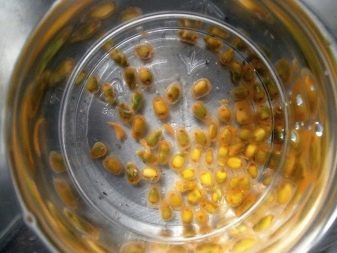
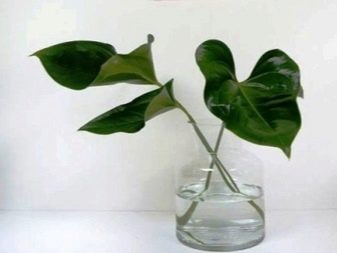
Red anthurium can be successfully propagated at home without much effort, you just need to follow some rules. It must be remembered that the plant is poisonous, so all work must be carried out with gloves.
To maintain a good atmosphere in the house, you need to plant an anthurium flower in it. With its properties and unusually luxurious look, it will cheer you up and give you a little bit of magic.
For information on how to properly care for an indoor plant anthurium, see the next video.



























The comment was sent successfully.